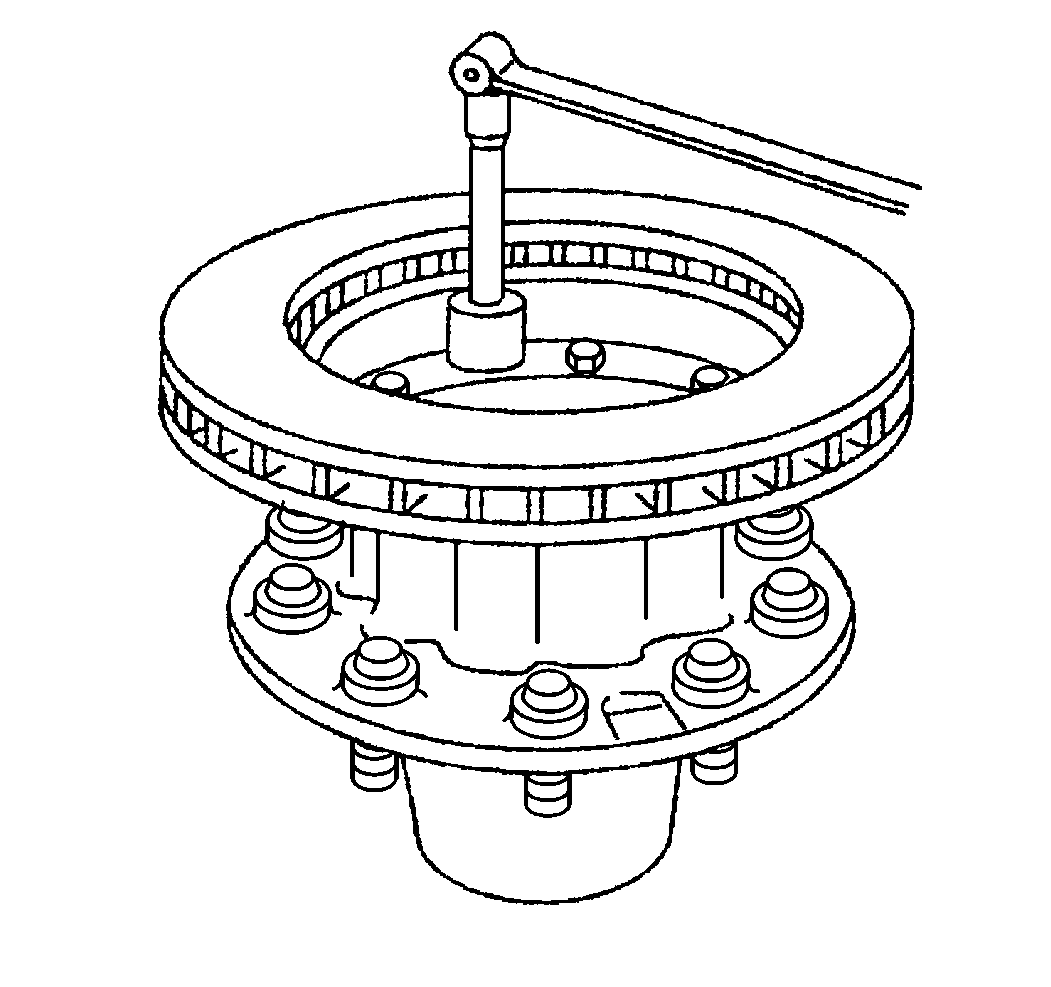Notice: Any new rotor must have the protective coating removed from the friction surfaces before being placed in service. Remove the protective coating using
denatured alcohol or an equivalent brake cleaner, and wipe the surface clean with clean cloths. Do not use gasoline, kerosene, or other oil base solvents which may leave an oily residue. This residue is damaging to the brake lining and is flammable.

- Install the brake rotor
to the hub, or the wheel.
Notice: Use the correct fastener in the correct location. Replacement fasteners
must be the correct part number for that application. Fasteners requiring
replacement or fasteners requiring the use of thread locking compound or sealant
are identified in the service procedure. Do not use paints, lubricants, or
corrosion inhibitors on fasteners or fastener joint surfaces unless specified.
These coatings affect fastener torque and joint clamping force and may damage
the fastener. Use the correct tightening sequence and specifications when
installing fasteners in order to avoid damage to parts and systems.
- Install the bolts
that mount the brake rotor to the hub, or the wheel.
Tighten
| • | Tighten the brake rotor bolts (9/16 in OD-10 bolt pattern)
to 152 N·m (112 lb ft). |
| • | Tighten the brake rotor bolts (5/8 in OD-5 bolt pattern)
to 256 N·m (189 lb ft). |
Important: Ensure that the threads are clean and greaseless before applying the
threadlock.
- Apply 272 Threadlock GM P/N 12345493, or the equivalent,
to the threads of each brake rotor bolt.
- Install the brake rotor (with the hub, or with the wheel). Refer
to
Rear Hub and Bearing Replacement
in
Rear Axle.
- Install the brake caliper. Refer to
Brake Caliper Replacement
.
- Clean both sides of the brake rotor with Brake Parts Cleaner GM P/N 12345754
or the equivalent.
- Clean the grease cap or cover (if used).
- Coat the inside
with wheel grease. Do not fill the cap.
- Install the tire and wheel. Refer to the applicable procedure
in Tires and Wheels:
| • | Tire and Wheel Removal and Installation (Disc
Type-Single Front/Rear)
|
| • | Tire and Wheel Removal and Installation (Disc
Type-Dual)
|
| • | Tire and Wheel Removal and Installation (Cast
Type-Single Front/Rear)
|
| • | Tire and Wheel Removal and Installation (Cast
Type-Dual)
|
- Lower the vehicle. Refer to
Lifting and Jacking the Vehicle
in General Information.
Caution: Do not move the vehicle until a firm brake pedal is obtained. Failure
to obtain a firm pedal before moving vehicle may result in personal injury.
Important: Check the level of the brake fluid in the master cylinder reservoir
after pumping the brake pedal.
- Pump the brake pedal several times in order to ensure the pedal is firm
and the brake pads are adjusted.
- Remove the wheel blocks.


